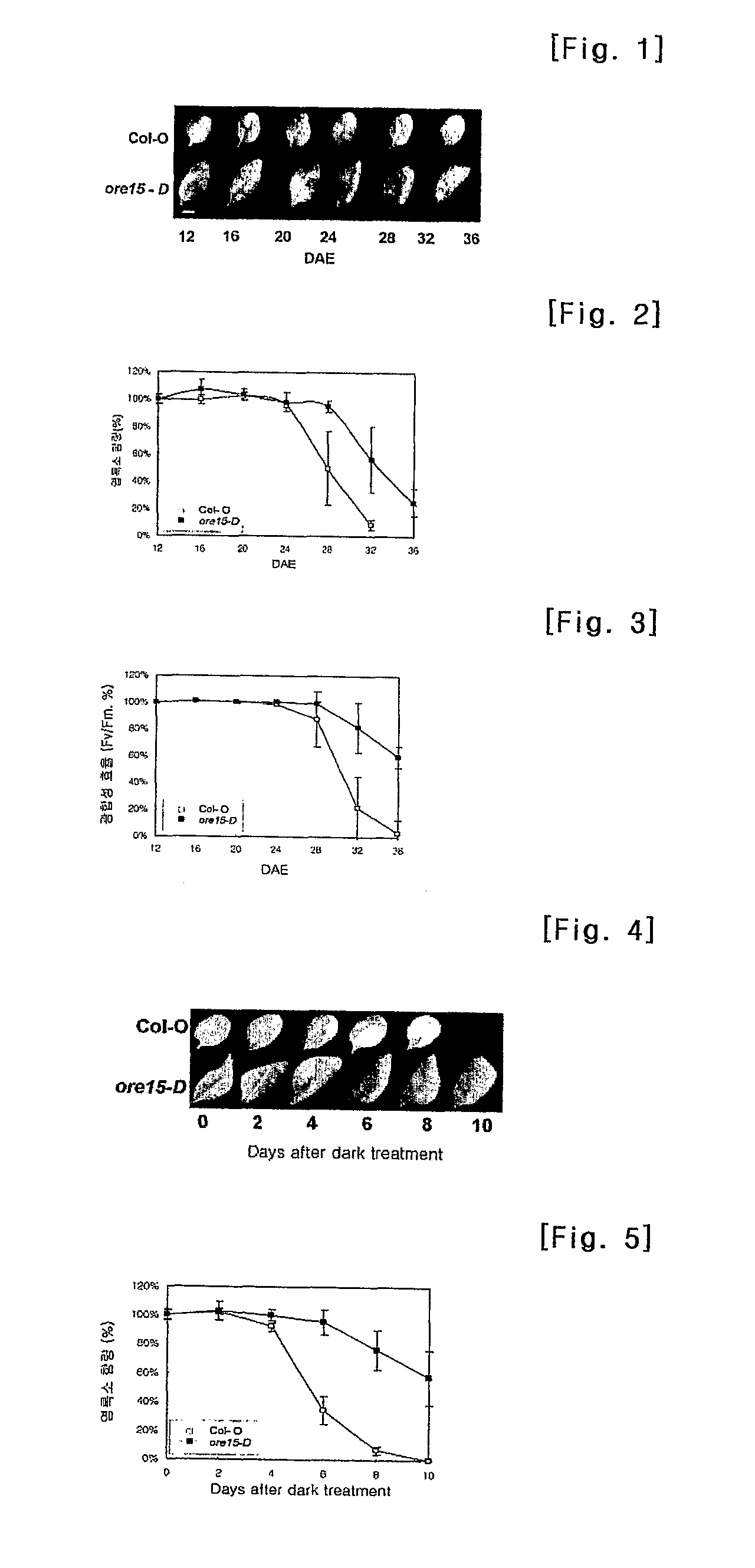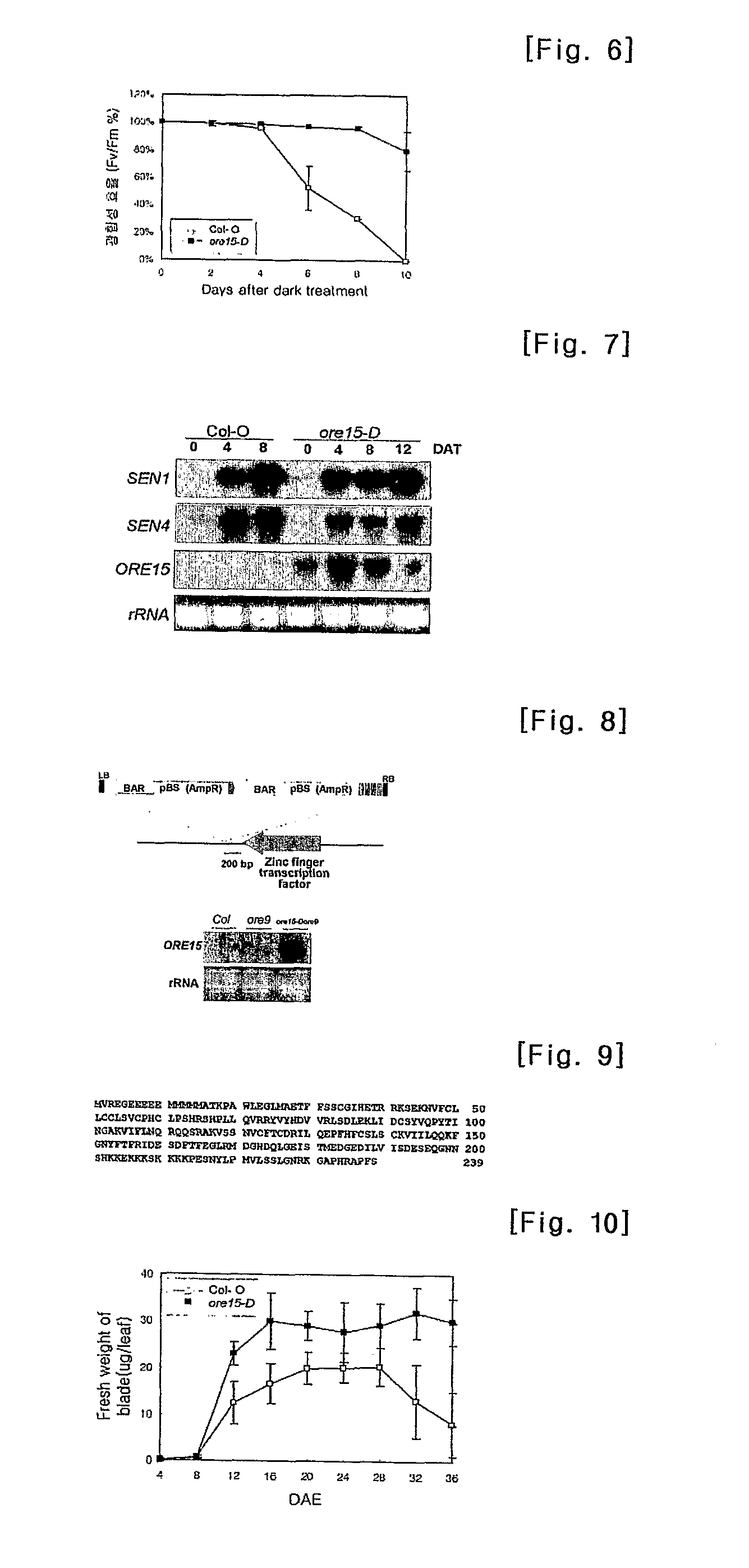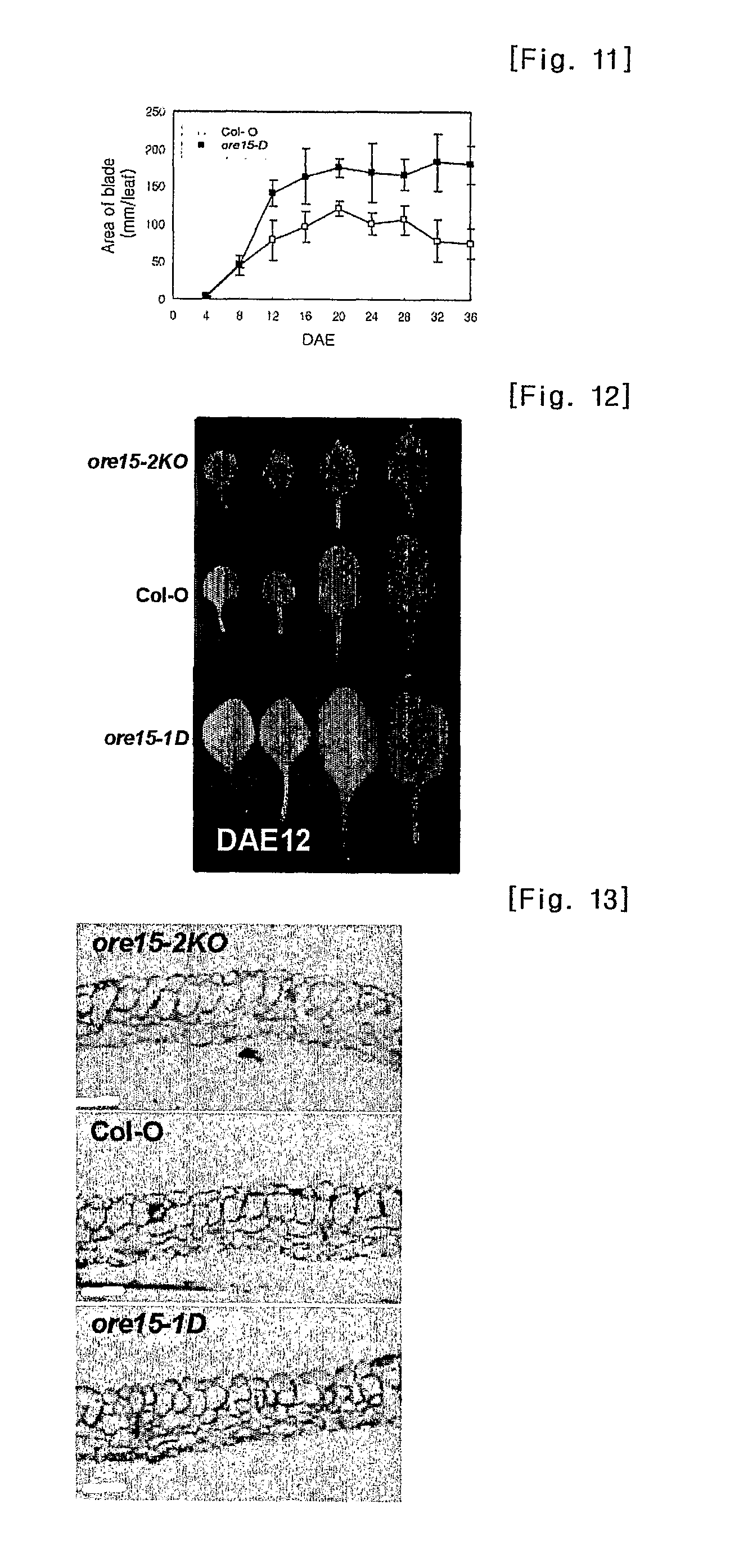Protein regulating leaf longevity of plants, the gene thereof and their use
a technology of plant genes and proteins, applied in the direction of plant/algae/fungi/lichens ingredients, peptide sources, peptide sources, etc., can solve the problems of limiting the longevity of individual plants, the use of senescence regulating genes, and the insufficient study of senescence regulation, etc., to achieve the effect of regulating the longevity of plants
- Summary
- Abstract
- Description
- Claims
- Application Information
AI Technical Summary
Benefits of technology
Problems solved by technology
Method used
Image
Examples
example 1
Selection of Senescence-Delayed Mutant from Arabidopsis thaliana
[0079]First, mutation was induced in Arabidopsis thaliana. For this, an activation tagging vector pSKI015 (Weigel et al., Plant Physiology 122:1003-1014, 2000) (granted from the Weigel lab, U.S.A.) that contained four CaMV 35S enhancements located near the right border of T-DNA, and a bar gene (phosphinothricin acetyltransferase gene) conferring Basta resistance was introduced into Agrobacterium tumefacience ABI strain (granted from the Amasino lab, U.S.A.) using an eletroporation method, followed by selection in a medium containing kanamycin and carbenicillin. Thereafter, the Agrobacterium tumefacience strain carrying the pSKI015 vector was transfected into the Arabidopsis thaliana senescence-delay mutant ore9-1 (Woo H. R. et al. Plant Cell 13:1779-1790, 2001) using a floral dip method (Clough et al., Plant J., 16(6):735-743, 1998). Seeds of the transfected Arabidopsis thaliana were selected in the presence of Basta h...
example 2
Examination of Expression of Senescence Delay Mutant ore15-D
[0080]In order to examine senescence delay characteristics of the ore15-D mutant, the leaf chlorophyll content and photosynthesis activity of the mutant ore15-D and the wild type (Col-O) were compared.
[0081]2-1) Measurement of Chlorophyll Content
[0082]Leaves from each sample were boiled at 80° C. in 95% ethanol to extract chlorophyll. Chlorophyll content was determined by absorbance at 648 nm and 664 nm and expressed as percentages with regard to the fresh weight of leaf material (Vermon et al., Anal. Chem. 32:1142-1150, 1960).
[0083]In the wild type (Col-O), chlorophyll content was measured to be 50% at 28 DAE (days after emergence), as shown in FIG. 2, with chlorosis starting at 24 DAE. In contrast, the chlorophyll content of ore15-D was maintained at 100% to 28 DAE and at about 25% even until 36 DAE.
[0084]2-2) Photosynthetic Activity
[0085]Photosynthetic activity was measured using Oh's method (Oh S. A. et al., Plant Mol. ...
example 3
Change in ore15-D Mutant Leaf Longevity According to Dark Treatment
[0088]The leaf longevity of the ore15-D mutant was measured in terms of change in photosynthesis activity and chlorophyll content according to dark treatment, a senescence-accelerating factor.
[0089]Each of 24 leaves (12 DAE) from the wild type (Col-O) and the ore15-D mutant was floated on 3 mM 2-[N-morpholino]-ethanesulfonic acid (pH 5.8) (hereinafter referred to as ‘MES buffer’). While being placed at 22° C. in a completely dark box, the leaves were individually assayed every other day for photosynthetic activity and chlorophyll content, as in Example 2. FIG. 4 is a photograph showing senescence progression with time in the leaves of the wild type (Col-O) and mutant type ore15-D of Arabidopsis thaliana after the dark treatment. As shown in the photograph, the variant ore15-D of the present invention was greatly delayed in senescence, compared to the wild type. In addition, five days after the dark treatment, as depi...
PUM
| Property | Measurement | Unit |
|---|---|---|
| bar size | aaaaa | aaaaa |
| pH | aaaaa | aaaaa |
| length | aaaaa | aaaaa |
Abstract
Description
Claims
Application Information
 Login to View More
Login to View More - R&D
- Intellectual Property
- Life Sciences
- Materials
- Tech Scout
- Unparalleled Data Quality
- Higher Quality Content
- 60% Fewer Hallucinations
Browse by: Latest US Patents, China's latest patents, Technical Efficacy Thesaurus, Application Domain, Technology Topic, Popular Technical Reports.
© 2025 PatSnap. All rights reserved.Legal|Privacy policy|Modern Slavery Act Transparency Statement|Sitemap|About US| Contact US: help@patsnap.com



